The certification platform in Projecta is designed to provide an easy path for
projects to be able to issue certification certificates. The system allows
a project to approve one or more certification providers. These
providers can then set up training centers and course conveners.
Course conveners prepare a course and then attendees are assigned
to that course. Once the course is completed, certificates get
issued by the course convener in digital form. There is the
opportunity to charge a fee for each certificate issued. This
mechanism can be used to support the parent project.
The following diagram provides a generalised overview of the
certification process from the point of view of a certifying organisation.
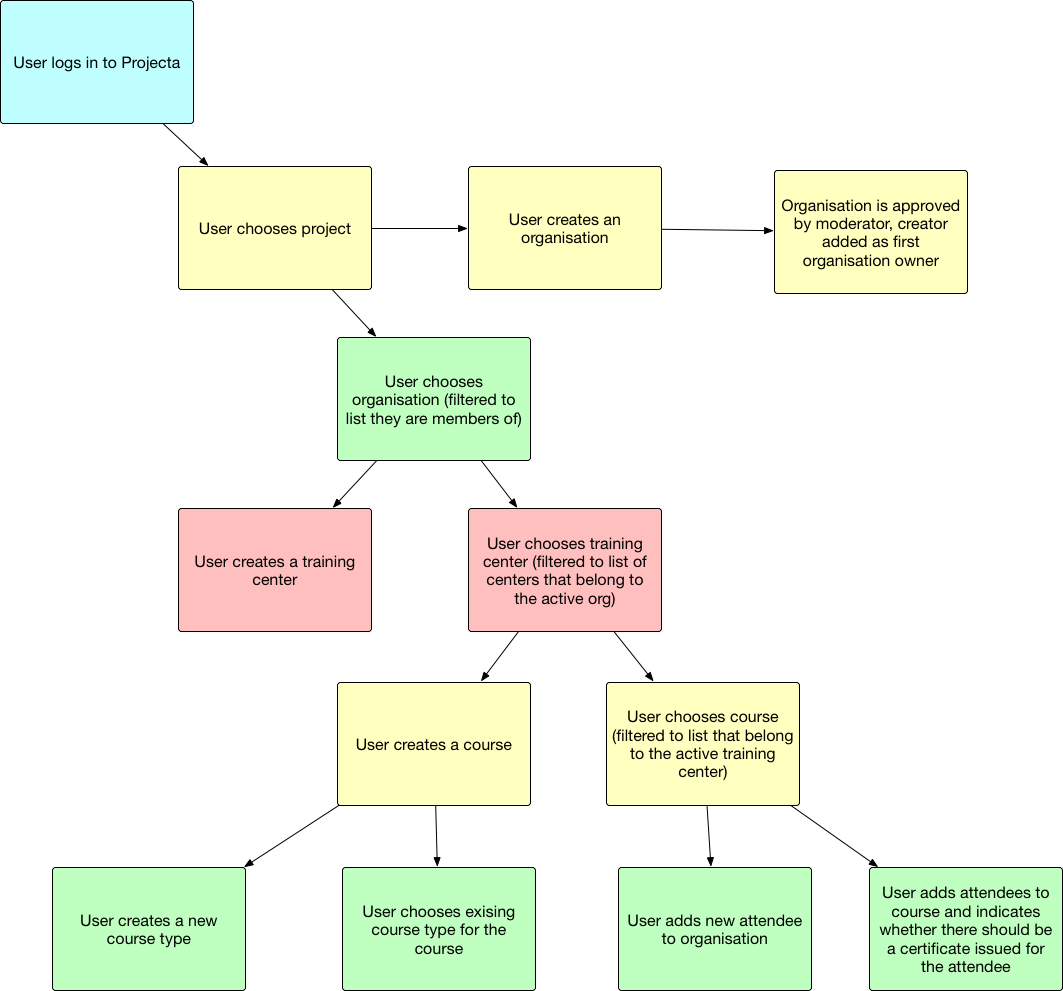
You may be wondering about our approach to certification. We looked
at a number of approaches where we could provide a more rigorous
and systematic way of certifying software users. These approaches can
be split in two general approaches:
-
Computer based testing: Favoured by industry, in this approach the project owner
would create a large pool of questions and then provide a test
environment where a random subset of questions are allocated to
the person being tested and they would carry out an online
examination. There are a few issues with this approach including
the need for a way to verify that the correct user actually
undertook the exam and not a proxy, the need for a large amount
of project input to create and maintain the test questions, and the
general trend for examinees to go online and share the questions
the were asked for future examinees. There is also the issue that
sometimes complex (especially graphical) software is hard to
examine in an environment where text based answers are expected.
-
Portfolio based testing: Favoured by academia, this approach
requires attendees to submit mini-projects or other projects
such as maps and reports to demonstrate their competency. This
has a downside that each evaluation is very personal and subjective.
Neither of these systems is really suitable for our needs so we have
opted for a third choice: In this approach we create a "web of
trust". In this approach we trust the organisations that provide
training to properly issue certificates for their course attendees.
We spend our time verifying the certifying organisation and then
trust them to 'do the right thing' after that.
Setting up the certification programme for your project starts with the
creation of one or more certification managers in your project. Certification
managers are moderators for the certification programme in your project.
Only a project administrator can update the list of certification
managers. The project owner and certification managers can then
manage which users can approve and manage the list of certifying
organisations. Whenever a new certifying organisation is registered,
the project certification managers will receive a notification
by email that there is a new organisation ready for review and approval.
You can manage the list of certication managers for a project by
clicking on the project edit button and then scrolling down until you find
the certification managers list. Add and remove members from the
list as needed and then save your project.
To register a new certifying organisation, go to a project page
and open the Certification menu. Click on Organisations
and then click on the asterisk icon next to the page heading for
Certifying Organisations.
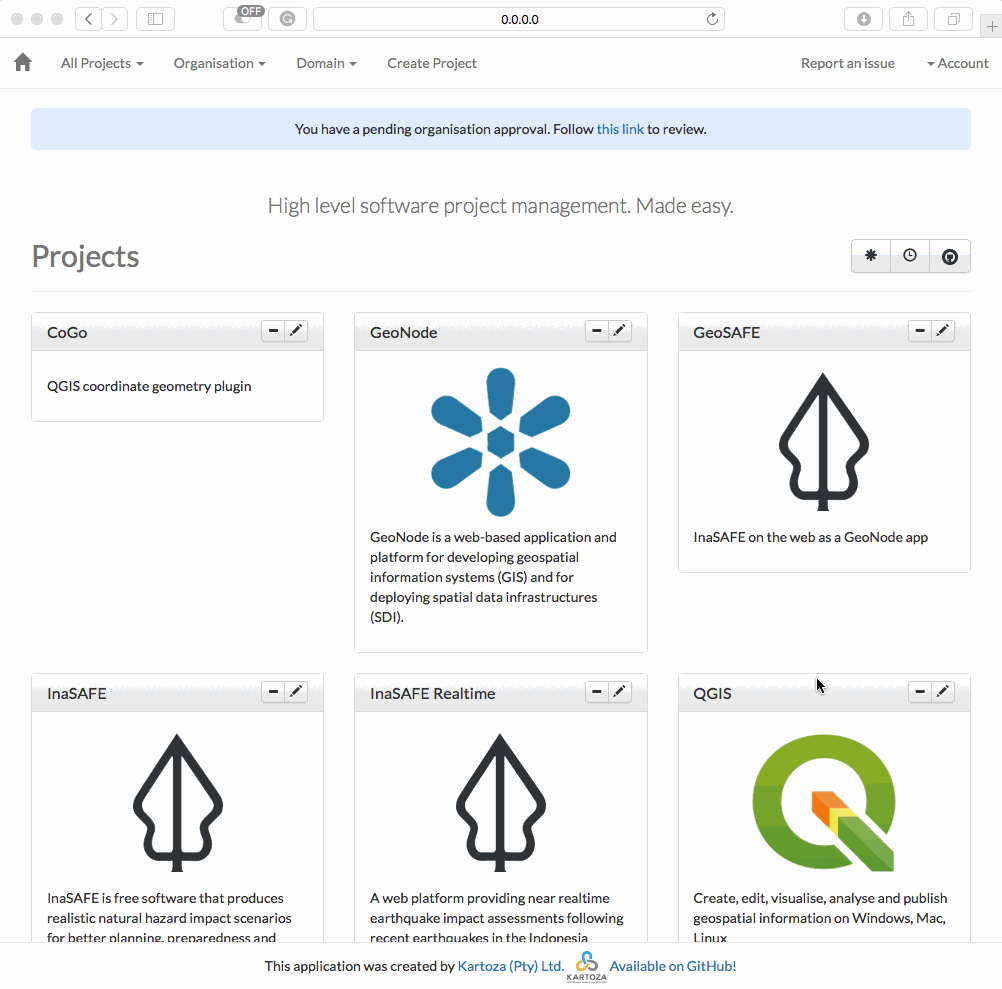
On the registration page you can fill in all the key details about
your organisation including its, address (physical and online),
contact person email, logo and so on. It is important to include
a logo if you have one as that will be used on the certificates issued
by the system. We recommend that you use a logo with a square aspect ratio for this.
The approval process is largely a norm established in your project.
One approach that can be taken is to approve 'known' organisations
associated with the project based on your knowledge of the
organisation's skills and competencies. For organisations that
are not known to the project, a more rigorous process can be followed
whereby moderators review the applicant certifying organisation's
web site, ask to review their training course curricula, the
training materials used by the organisation, or possibly even sit in
on a training course conducted by the applicant to verify that they
"know their stuff". Once the organisation has passed approval, the
organisation owner and mangers will be able to proceed with
setting up courses, conveners and so on using the management
interface provided on projecta.
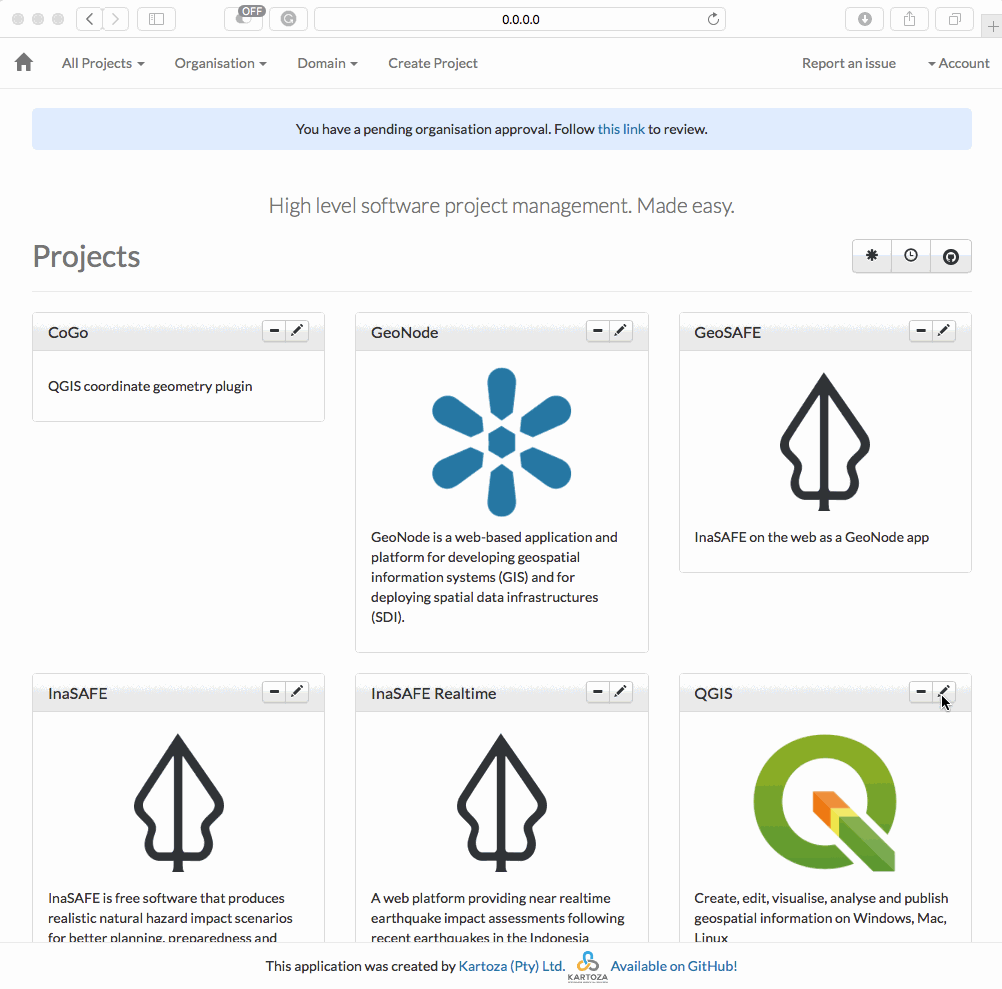
Once the organisation is approved, you will receive a confirmation
email and the organisation can be managed from the project
certication menu. Your new project will look something like this:
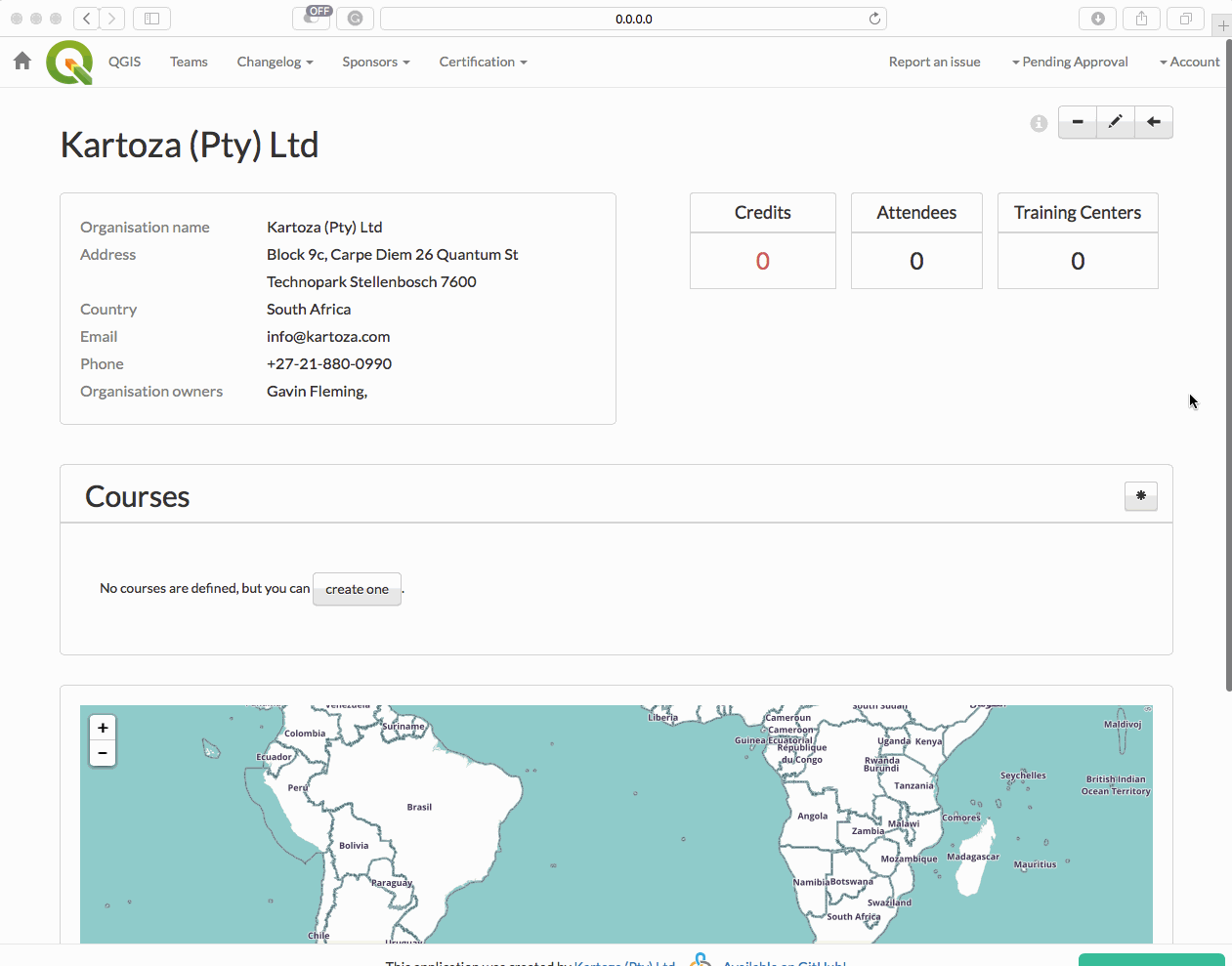
The top of your organisation page gives a quick dashboard overview
of your organisation, credits, training centers and attendees.
The map will be zoomed in to the region where your organisation operates.
There are then four main things that can be managed:
- Courses
- Training Centers
- Course Types
- Course conveners
Typically you will first create Training Centers, Course conveners, Course types
and then create courses.
A training center is a venue where you regularly conduct courses.
Each organisation may have one or more training centers. If you
are doing onsite or 'roaming' training, I suggest to either
make a training center per location where you offer training, or
create a single location (e.g. at your offices) that you can
use as a proxy for other venues.
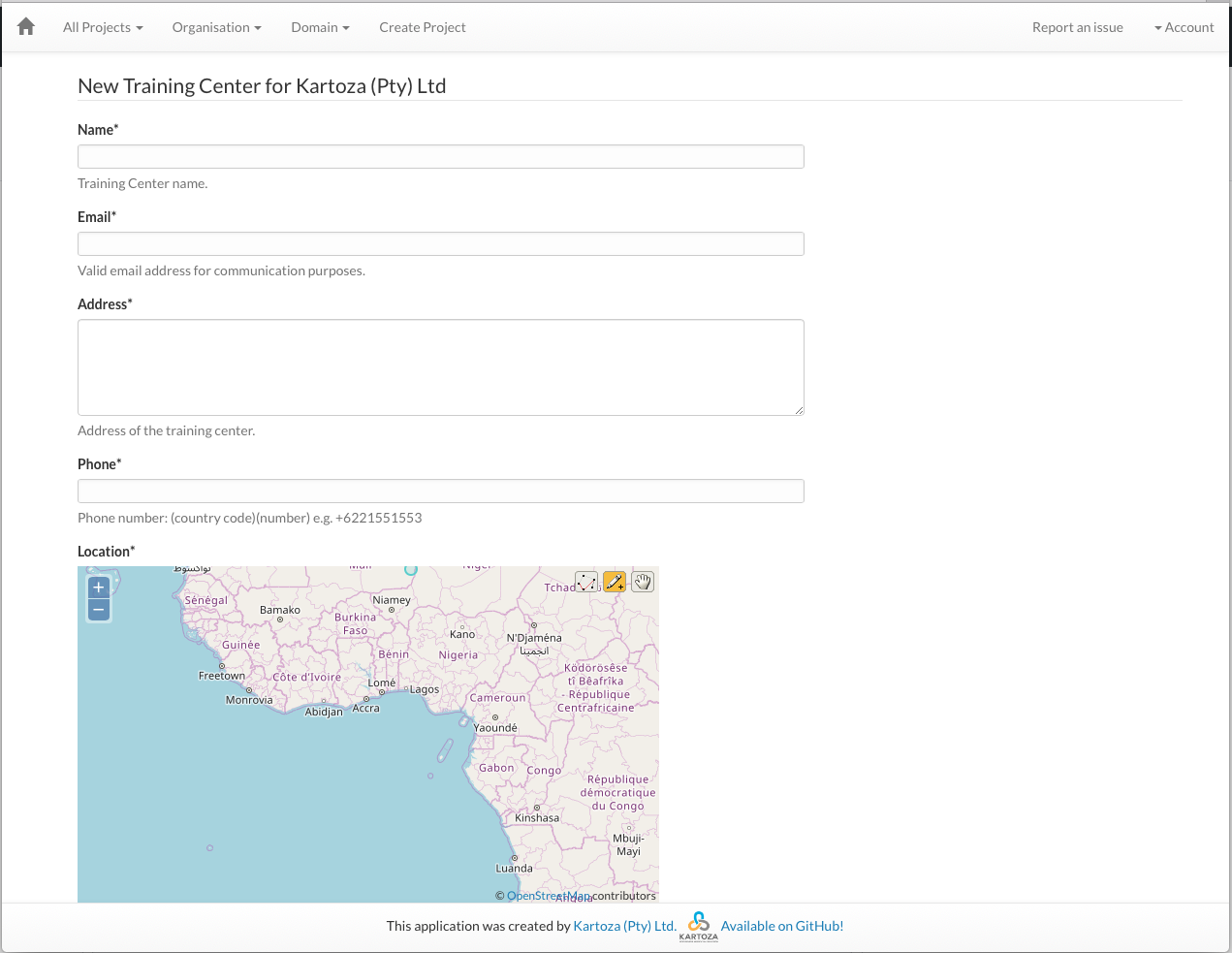
In the future we will provide a map with pins showing where
upcoming training courses will be provided for all Certification
organisations.
A course convener is either the trainer or the person responsible
for the course. The certificate will be issued with the name of
the course convener on it. Be sure to upload a digital signature
for each course convener if you do not want to manually print
and sign the certificates.
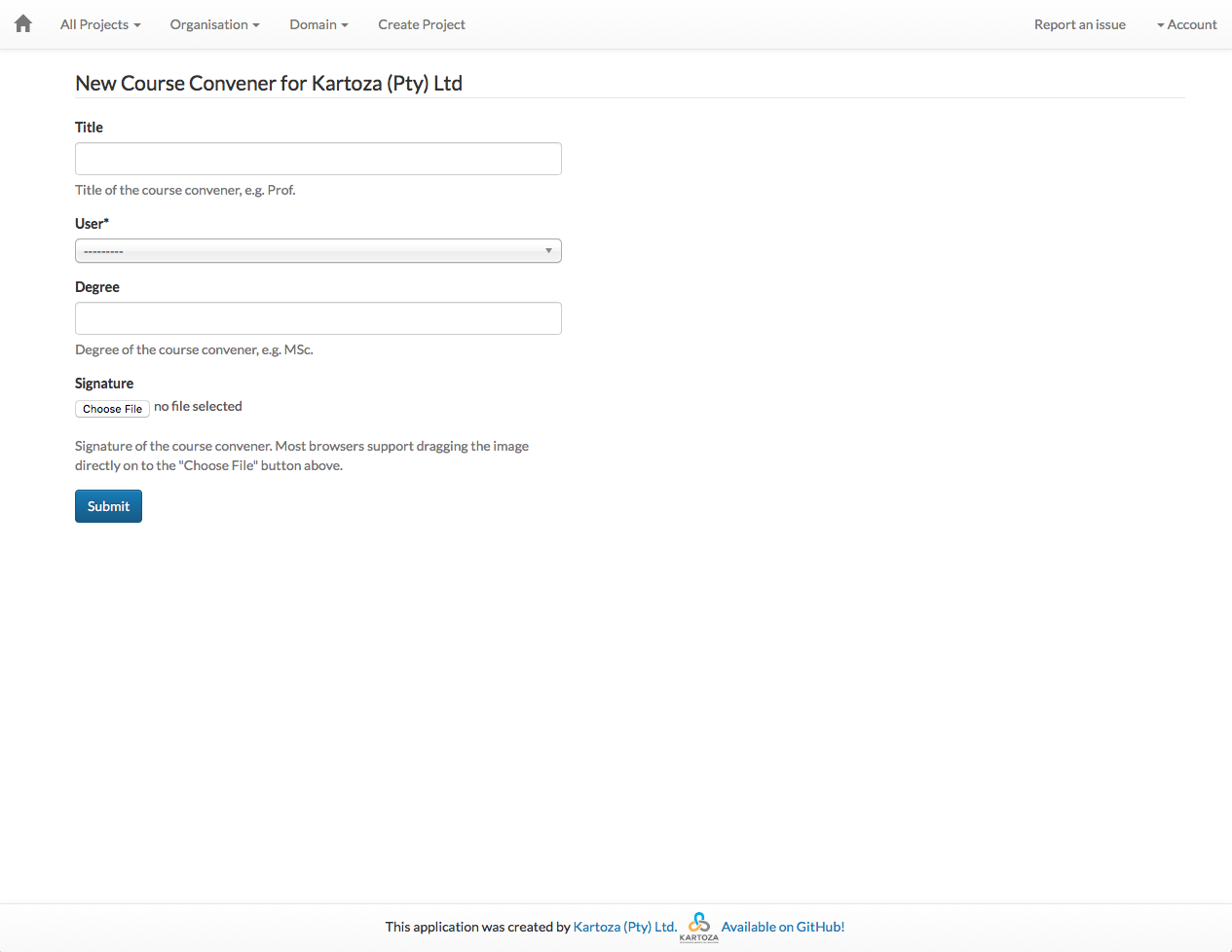
Course types describe the different content offering you offer.
You can include how many hours of instruction that are included
in the course. If you do this, this information will be included
on the certificate when it is generated. Probably you will
define your course types around topics (e.g. working with
databases) or around skill leve (beginner, intermediate etc.).
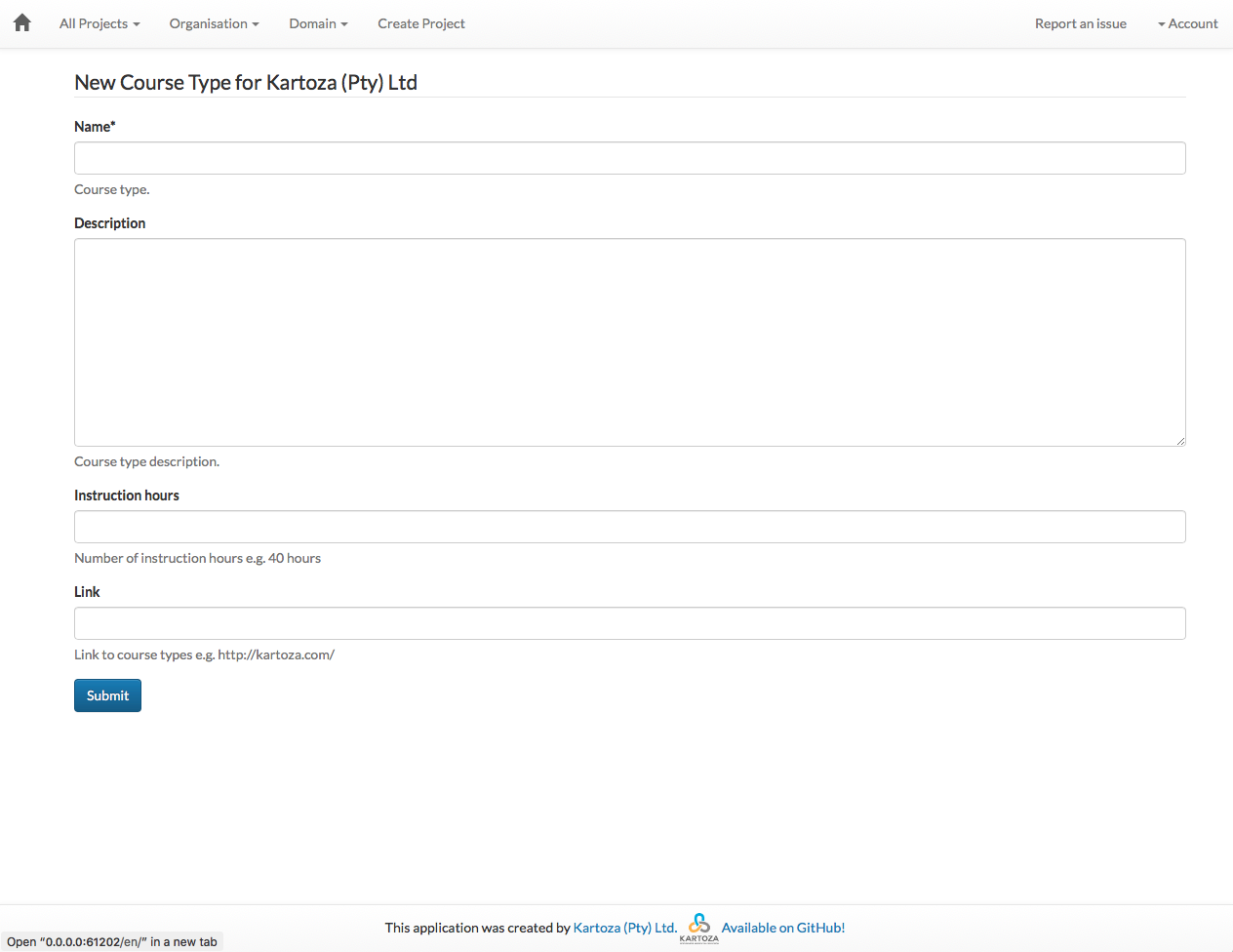
A course is run at a training center by a course convener for
a particular course. When creating a course, you can add
attendees to the course. Attendees do not need to register on the
Projecta web platform.
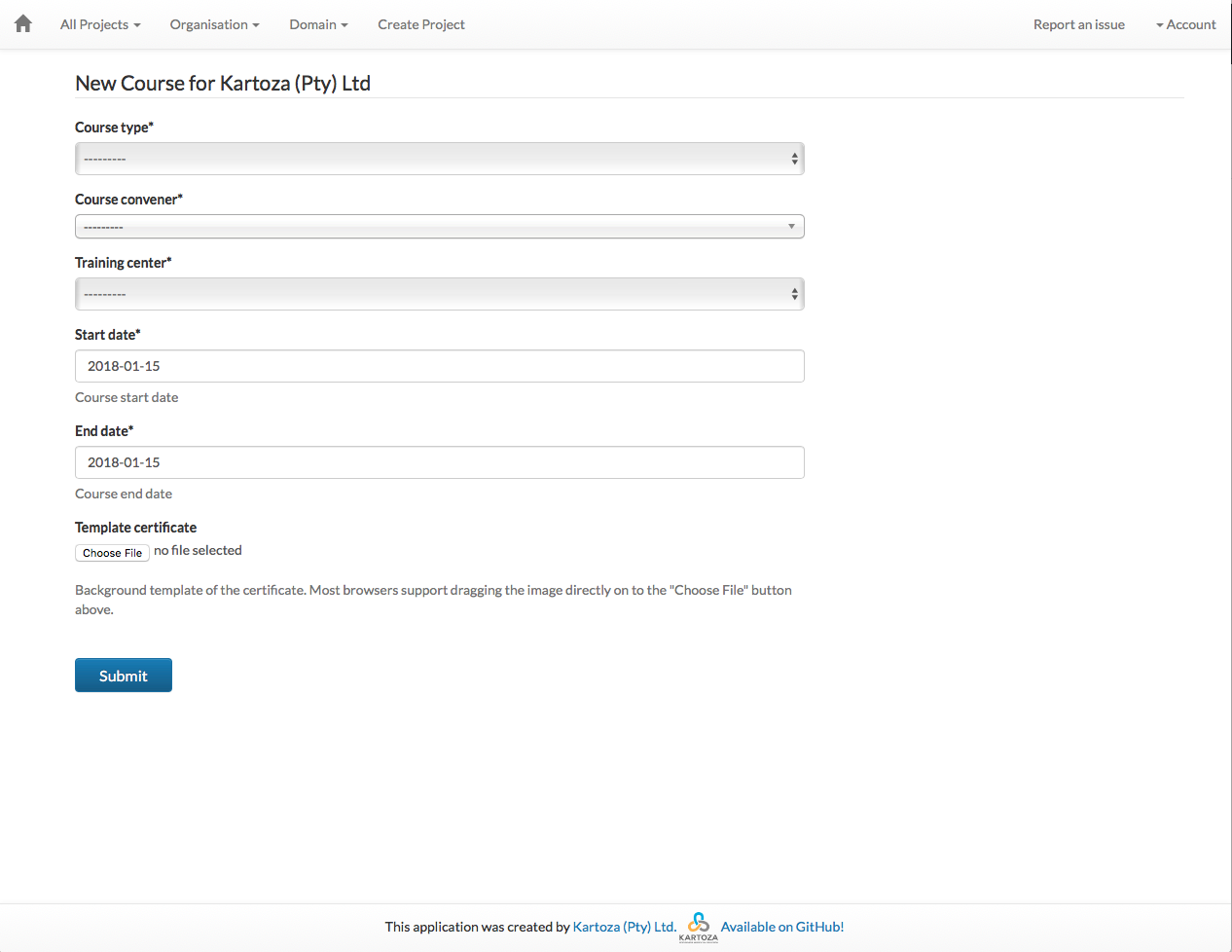
You can create your own custom templates for the certificates that you issue. In this workflow
we use the Gimp to open one of the generated certificate PDF's from your course.
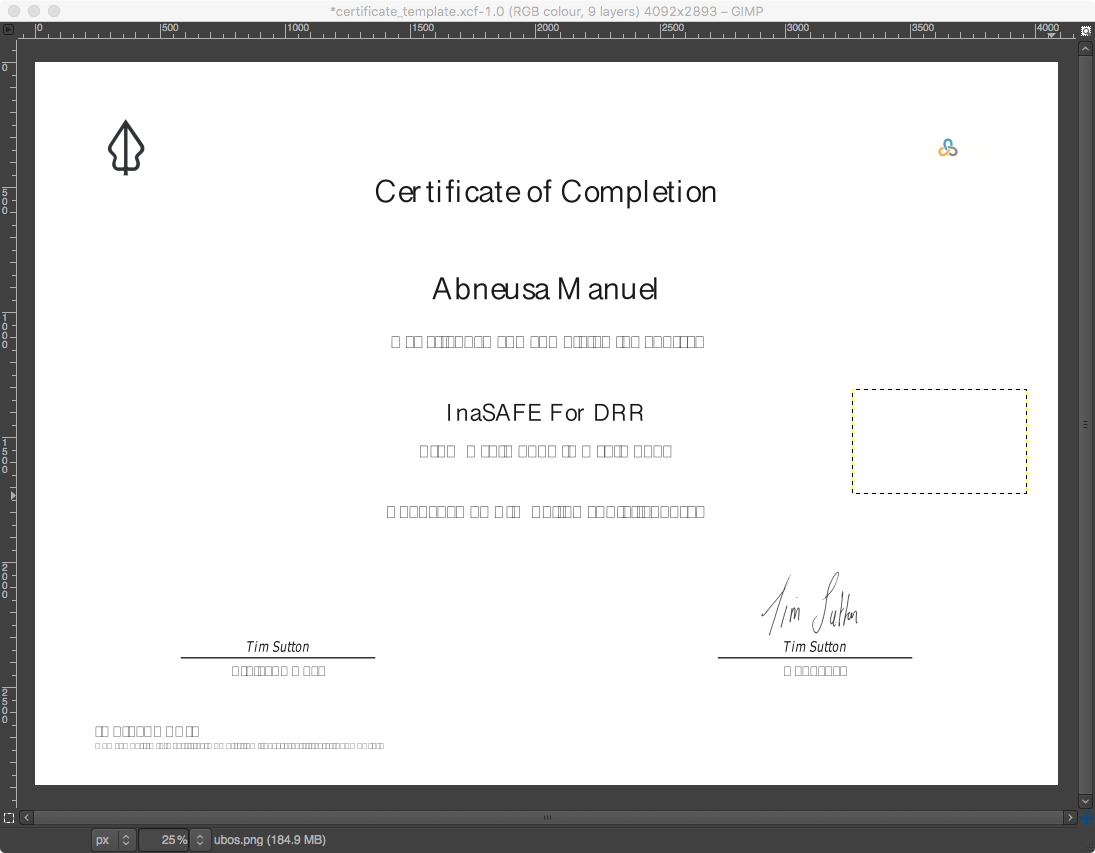
Next decorate around the pre-planned text from the certificate.
We don't have a templating language so you cannot move the
pre-defined elements currently.
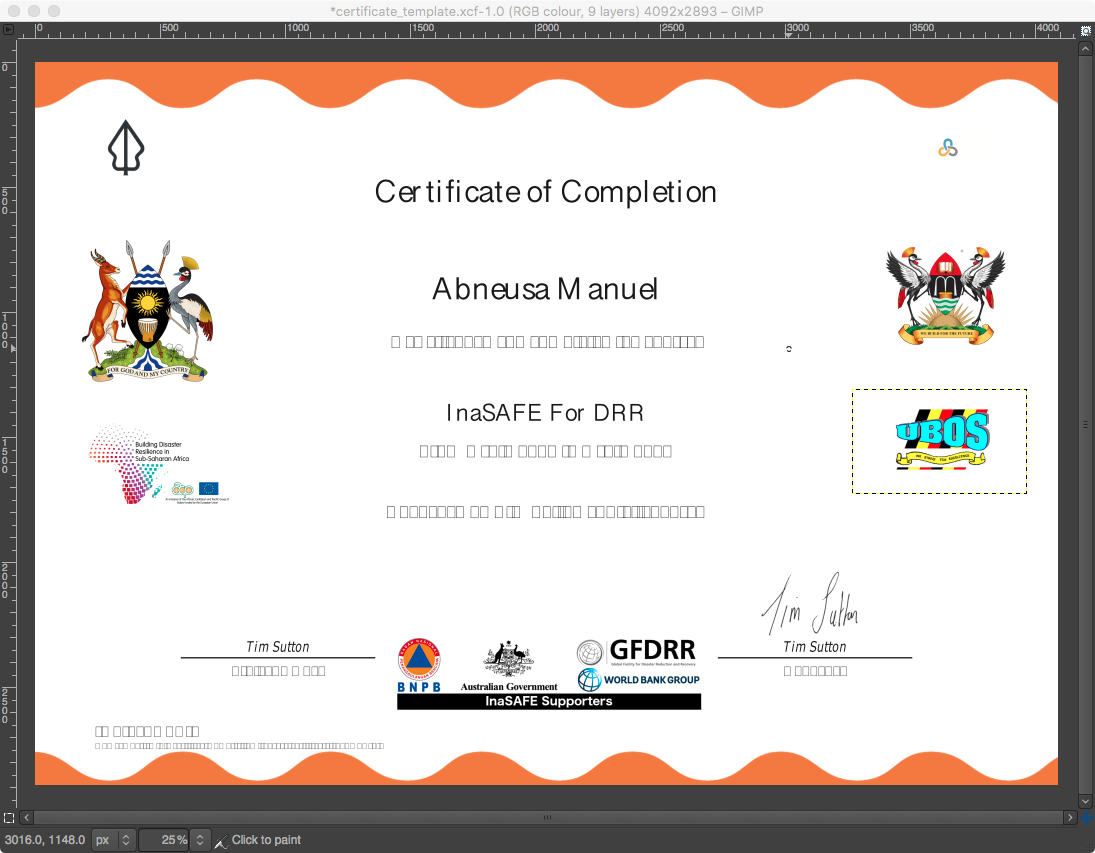
Once your template is prepared, you hide again the original certificate layer and export
your gimp document as a PNG image.

Now upload the image to the course edit page and test your template
by adding one course participant and using the ‘Print Certificate’ icon to preview it.
Note that the template you upload should be formatted to A4, not US Letter.
We are planning to introduce an e-commerce system soon. When that is implemented, you
will be able to purchase credits which can be used to then pay for the
certificates you issue. Currently we work on a somewhat manual system -
when you are going to be running a course, ask one of the project
administrators to load credits for your organisation. Then add attendees to your
course (you can do this individually or in buld by providing a CSV file).
We are planning to introduce an e-commerce system soon. When that is implemented, you
will be able to purchase credits which can be used to then pay for the
certificates you issue. Currently we work on a somewhat manual system -
when you are going to be running a course, ask one of the project
administrators to load credits for your organisation. Then add attendees to your
course (you can do this individually or in bulk by providing a CSV file).
Once you have issued certificates for each attendee you can issue certificates.
The process of registering an attendee and issuing the certificate is separated
so you need only issue certificate to those that pass your course.
Each attendee will receive an email with a link to a downloadable copy of the
certificate. The certificate includes a unique number which is allocated to each certificate
and a unique link that they can provide (for example in their CV) to
verify that they have indeed completed the course. This mechanism should
help to prevent fake certificates.
Course conveners should upload a digital signature to their
profile. This is embedded into the certificate together with
the digital signature of the project leader (who needs to set this
in the project profile options page).
If you have any problems using the certification platform please file an
issue at https://github.com/kartoza/projecta/issues.










